|
About Tripura |
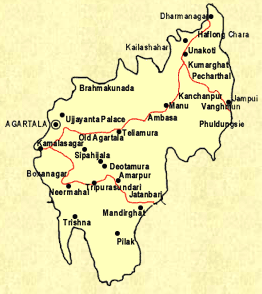 |
Tripura is one
of the seven states in the north eastern part of India.
Tripura is the second smallest state in India. It is bounded
in the north, west, south and south-east by Bangladesh and in
the east with Assam and Mizoram. It is believed that the name
of the State originated from "Tripura Sundari", the presiding
deity which is known as one of the 51 pethos of the Hindu
pilgrims. It is also believed that originally, Tripura was
known as "Tuipra" that means a land adjoining the water. In
the earlier days, the boundaries of Tripura was extended up to
the Bay of Bengal when its rulers held sway from Garo hills to
Arakan. The state is covered by picturesque hills
and dales, deep and green valleys which have added
beauty to its landscape. It has excellent
opportunity for tourism and various places of
interest. The
different folk dances of Tripura speak about its
rich cultural heritage. |
|
Agartala is the state
capital of Tripura. The people of Tripura are
known as Tripuris. Bengali, Kakbarak and Manipuri
are the main languages which are spoken by the
people in Tripura. The Kak-Barak, means the
language of men (kak means words and barak means
men). The best time to visit Tripura is in the
month of September and October as at this time,
the climate is very pleasant. |
|
|
|
|
|
History of Tripura |
|
The History
of Tripura belongs to the days when the small territory of
Tripura was a native state and it was ruled by Maharajas.
It also played a role in the battle of Kurukshetra. The
former princely state of Tripura was ruled by about 74
Maharajas of Manikya dynasty. In 1280 AD, Tripura
experienced the onslaught of the Muslims. This was
followed by the inhabitation of settlers from Bengal and
Burma. The Bengal sultanate dominated till 1515. During
the rule of Jasodhara Manikya in 1586 the Tripura Rajas
confronted the Mughals and gave them a portion of Tripura
after their defeat. During Krishna Manikya's rule, the
Tripura was conquered by the British in 1761, and no
political agents were appointed in the state till 1871. It
was an independent administrative unit under the Maharaja
even during the British rule in India. After India's
independence, an agreement to merge Tripura with the
Indian Union was signed by the Regent Maharani on
September 9, 1947 and the administration of the state was
actually taken over by the Govt. of India on October 15,
1949. Tripura became a union territory without legislature
from November 1, 1956 and a popular ministry was
established in Tripura on July 1, 1963. On January 21,
1972 Tripura became the state. |
|
|
|
|
Geography
of Tripura |
|
The most
famous hill ranges, located in the east are the Jampoi,
Sakham Tlang, Langtarai, Athara Mura and Bara Mura. Be-talang-Shiv
(3,200 feet) in the Jampoi hill range is the highest peak
of the state. Various broad and elongated valleys are
located between the north-south trending, parallel to high
ranges. The soil in the valley is fertile with rich
alluvial deposits and therefore suitable for the
cultivation of paddy, jute, oilseeds, pulses, fruits and
vegetables. About 54.5% of the land is under forest. Only
about 24.3% area is available for agricultural use. The
Khowati, the Manu, the Haorah, the Muhuri and the Gomati
are some important rivers of Tripura. Gomati is the
largest river and is the most sacred river in Tripura. The
Khowai, Doloi, Manu, Juri and Langai rivers flows towards
the north and the Gomati, Muhuri and Feni flows towards
west. |
|
|
|
|
Festivals
of Tripura |
|
The
festivals of Tripura are celebrated by the tribal and
non-tribal people. The main festival which is celebrated
in Tripura is the Kharchi Puja, Ker and Garia Puja and
Ganga Puja. The Kharchi Puja is held in the month of July
and about fourteen deities are worshipped. The
celebrations are held in the temple premises and is joined
by thousands of people. When the sowing of seeds is over
by middle of April, the people pray to the God 'Garia' for
a happy harvest and entertain their beloved deity with
song and dance. This puja is known as the Garia Puja. The
Garia is a community festival and sacrifice of cocks is an
important feature of the festival. The other two important
festivals of Tripura are Durga Puja and Diwali. |
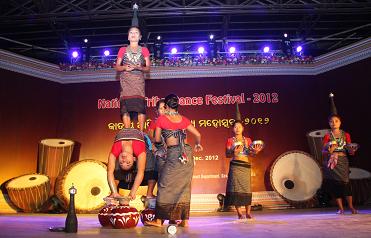
|
|
|
|
|
Places
in Tripura |
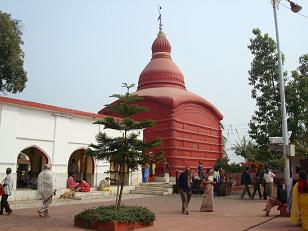 |
Tripura offers
various attractions for the tourists in the form of
magnificent palaces, rock-cut carvings, Hindu temples, lakes,
hill stations and wildlife sanctuaries. Some of the places in
Tripura are Ujjayanta Palace, Kunjaban Palace, Neermahal Lake
Palace, Tribal Museum, Sukanta Academy, Laxminarayan Temple,
Uma Maheswar Temple, Jagannath Temple, Fourteen Goddess
Temple, Portuguese Church, Gedu Mian Mosque, Unakoti, Pilak,
Tripureswari temple, Dumboor lake, Rudrasagar, Amarsagar,
Jampui hill and Sepahijala and Gumti wildlife sanctuaries.
|
|
| |
|
People
of Tripura |
|
There are two
major racial groups in Tripura, namely, the Indo-Aryans
represented by the Bengalese and the Indo-Mongloids
represented by a few communities like the Tripuris, Reangs,
Jamatis, Noatias, Kukis, Halams, Chakma, Mogh and Lushai. The
Tripuris also called Tripuras or Tipras are the original
inhabitants of the state. The Tripuris constitute the largest
section of the entire tribal community and represent more than
57% of the total tribal population of the state. They live in
the plains, erect houses and follow the other aspects of life.
The Reangs constitute about 4% of the total tribal population
of the state. They are considered as one of the strongest
pillars of the state military forces and are Hindus. The
Jamatias also constituted the fighting force during the time
of Tripura King. They prefer the Jhoom cultivation and settled
down in the plains.
|
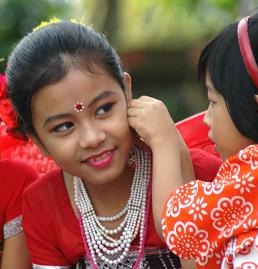 |
|
|
|
Dances of
Tripura |
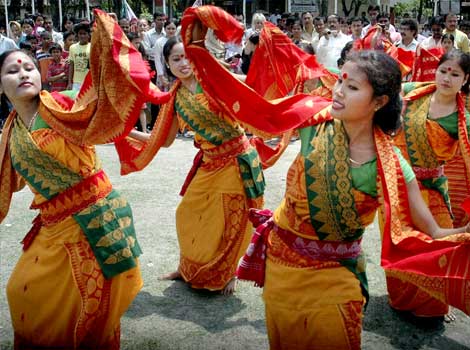 |
There are 19
different tribes, Bengalis and Manipuris in Tripura. Each of
these people have their own dance forms which are famous all
over the country. The main folk dances are Hozagiri dance of
Reangs, Garia, Jhum, Maimita, Masak Sumani and Lebang boomani
dances of Tripuris, Bizu dance of Chakma community, Cheraw and
Welcome dances of Lusais, Hai-Hak dance of Malsums, Wangala
dance of Garo, Sangraiaka, Chimithang, Padisha and abhangma
dances of Mog, Garia dances of Kalai and Jamatia, Gajan,
Dhamail, Sari and Rabindra dances of Bengalis and Basanta Rash
and Pung chalam dances of Manipuris.
|
|
|
|
|
Art & Craft
of Tripura |
|
Excellent
variety of handicrafts using bamboo and cane are made by
different communities of people which are known throughout the
country. The most famous handicraft products are Room Divider,
wall panels, cane furniture, decorative items using Bamboo
roots, Bamboo Dining table mats, Floor mats and various other
gift items. The tourist can view the craftsman at work in
different villages and buy handicraft and handloom products
from the Government Emporium of Tripura and other private
Sales Emporium.
|
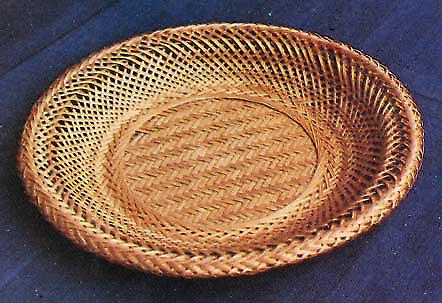 |
|
|
|
|
|

